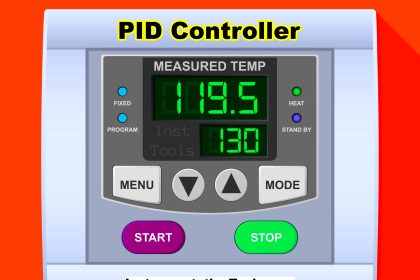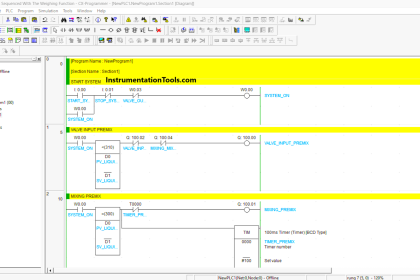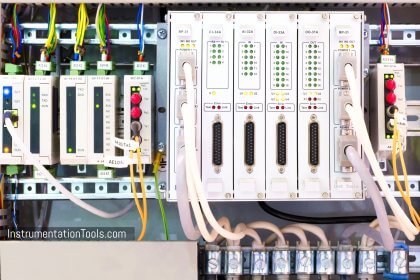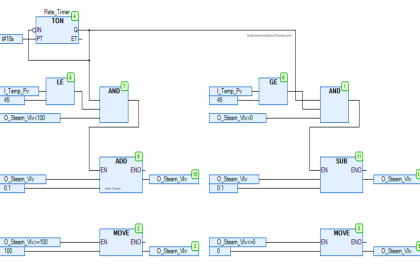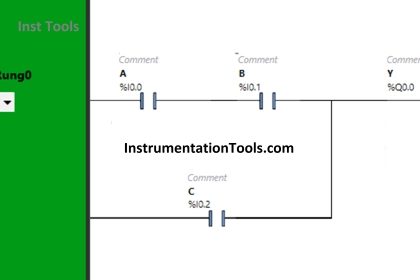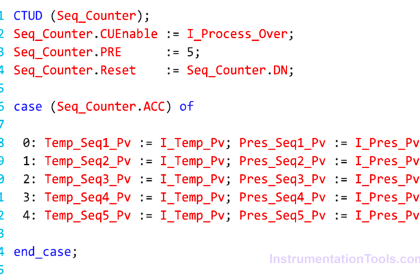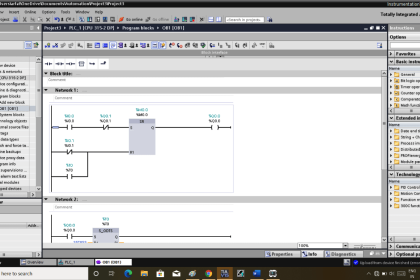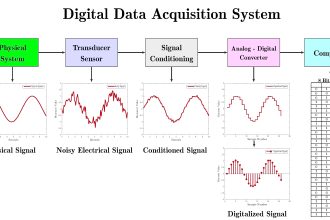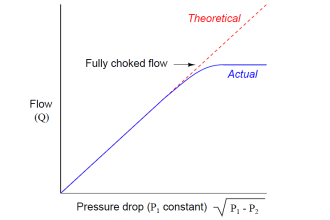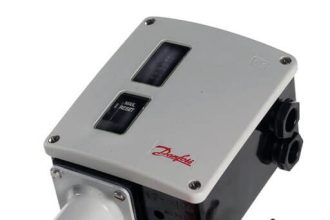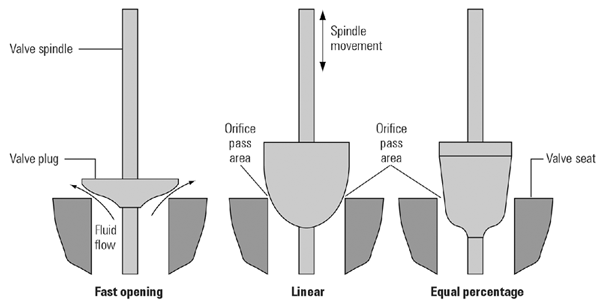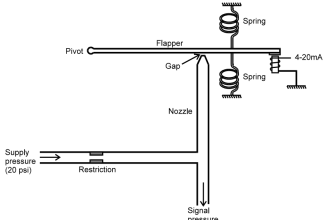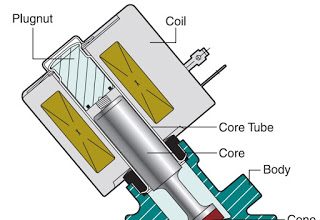Laws of Boolean algebra are used in digital electronics. Explain the Boolean algebra law using ladder language.
Laws of Boolean Algebra using Ladder Logic
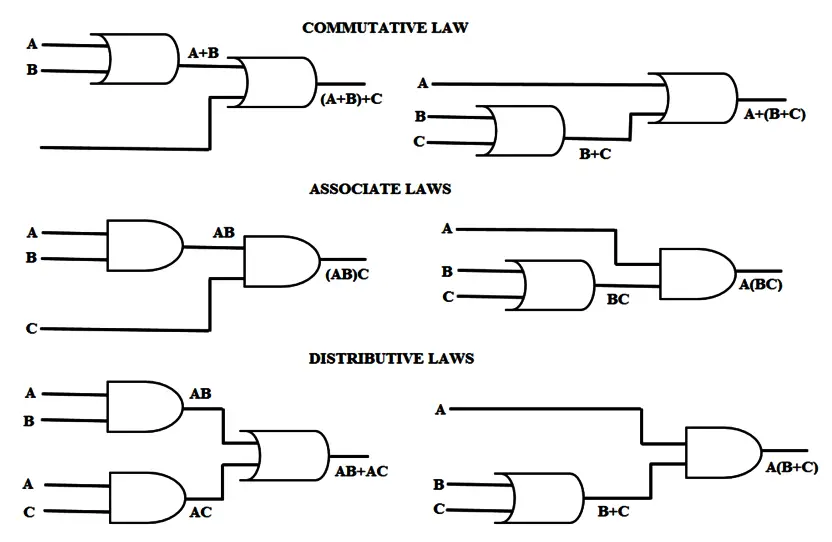
There are three basic laws of Boolean algebra.
- Commutative law,
- associate laws and
- distributive laws.
The commutative laws and associate laws are used for addition and multiplications and distributive laws are used for gate logic implementation.
Here take tree variable for this explanation for these laws. A, B and C are the variables for the explanation.
The commutative law of addition of two variables is AB=BA.
The associate law of addition for three variables is written as A+ (B+C) = (A+B) +C.
The distributive law is written for three variables as A (B+C) =AB+AC.
List of Inputs/Outputs
List of Inputs
- I1 :- A
- I2 :- B
- I3 : -C
List of Outputs
- Q1 :- Output 1
- Q2 :- Output 2
- Q3 :- Output 3
- Q4 :- Output 4
Memory coil
- M2 :- for Commutative laws
- M3 :- for associate law
- M4 :- for distributive law
PLC Ladder programming explanation
NETWORK 1 :-
Here OR gate is used for inputs A and B. Result will be stored in M2 memory.
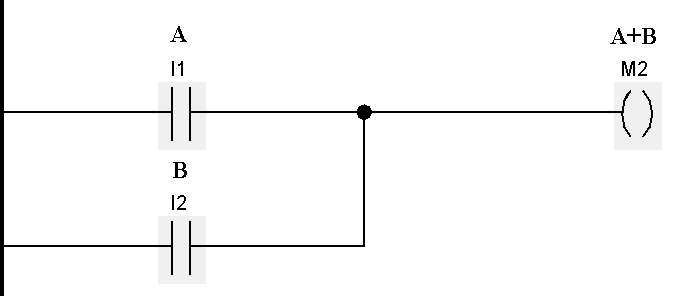
NETWORK 2 :-
Here combinational logic is used for commutative laws. Final result will be Q1.
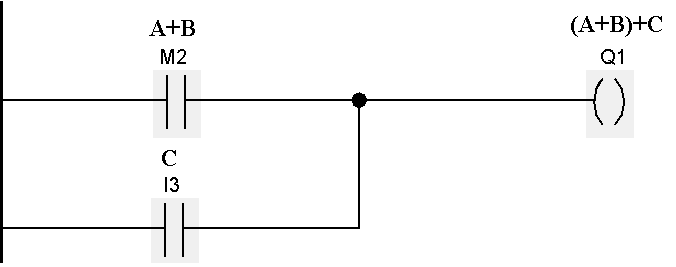
NETWORK 3 :-
Here AND gate is used for inputs A and B. Result will be stored in M1 coil.

NETWORK 4 :-
Combinational logic is used for associate law. Final result will be Q2

NETWORK 5 :-

AND gate of two inputs (A&B) for distributive law. Result will be stored in M3.
NETWORK 6 :-
AND gate of two inputs (A&C) for distributive law. Result will be stored in M4.

NETWORK 7 :-
OR gate of M3 and M4. Result will be stored in Q3.
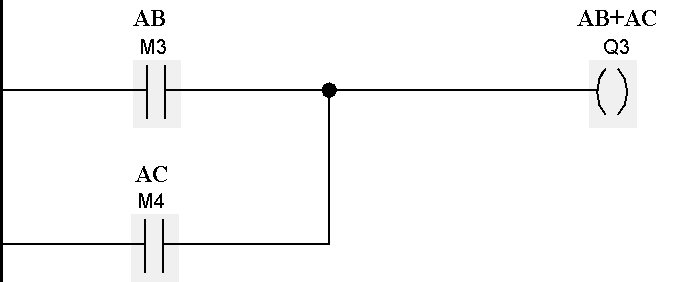
NETWORK 8 :-
Other combination of distributive law.
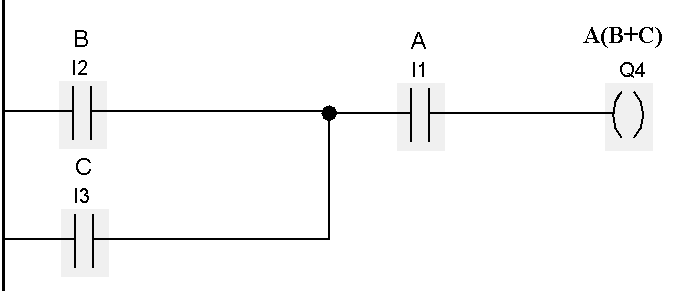
Note:-Above application may be different from actual application. This example is only for explanation and educational purpose only. We can implement this logic in other PLC also. This is the simple concept for Laws of Boolean algebra using ladder logic, we can use this concept in other examples also.
All parameters and graphical representations considered in this example are for explanation purpose only, parameters or representation may be different in actual applications. Also all interlocks are not considered in the application.
If you liked this article, then please subscribe to our YouTube Channel for PLC and SCADA video tutorials.
You can also follow us on Facebook and Twitter to receive daily updates.
Read Next:
Introduction to Karnaugh Mapping
What is Kirchhoff’s Current Law
